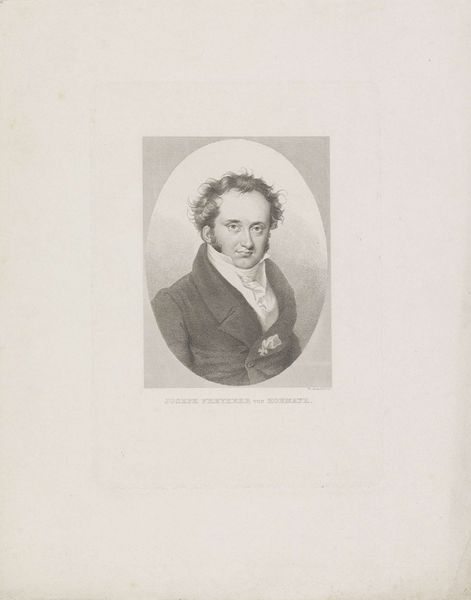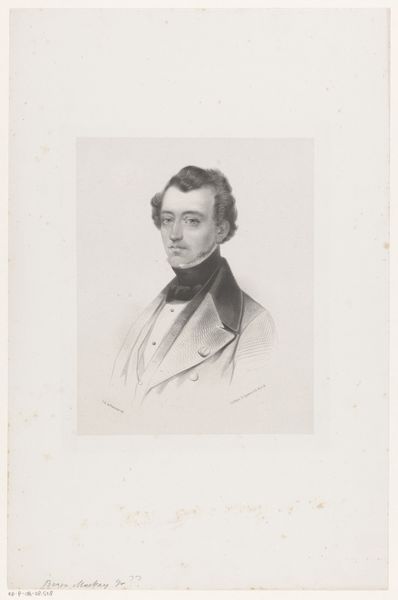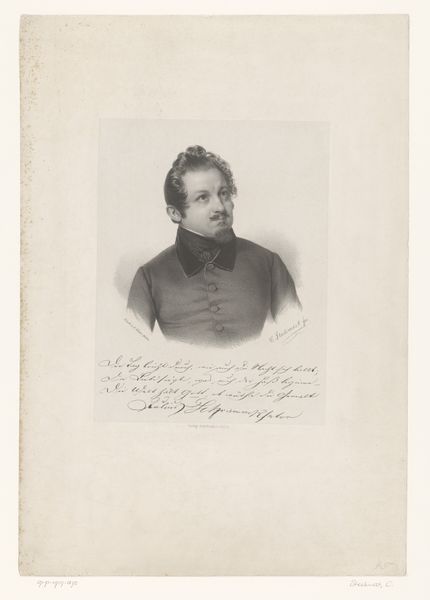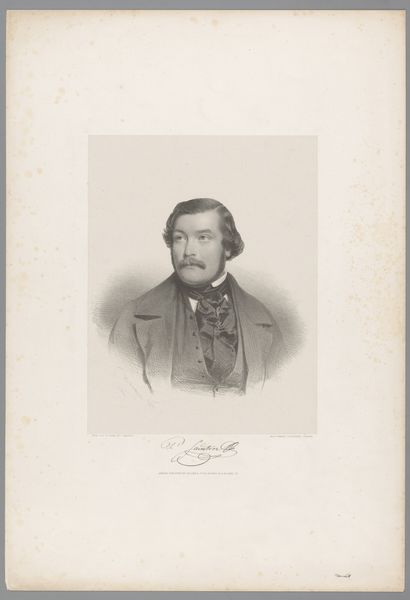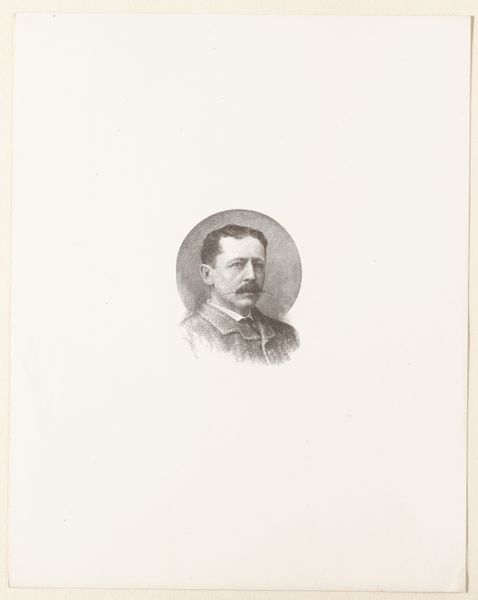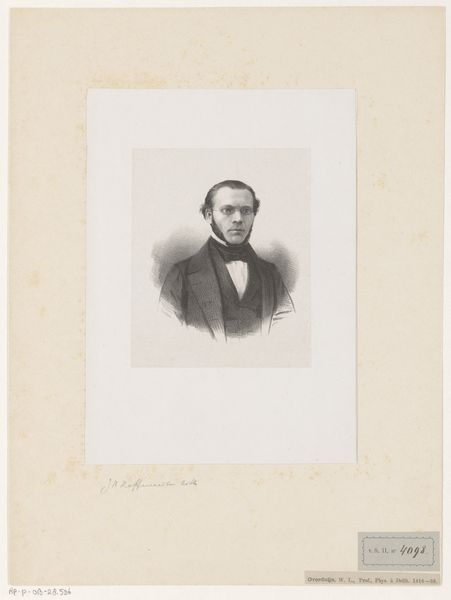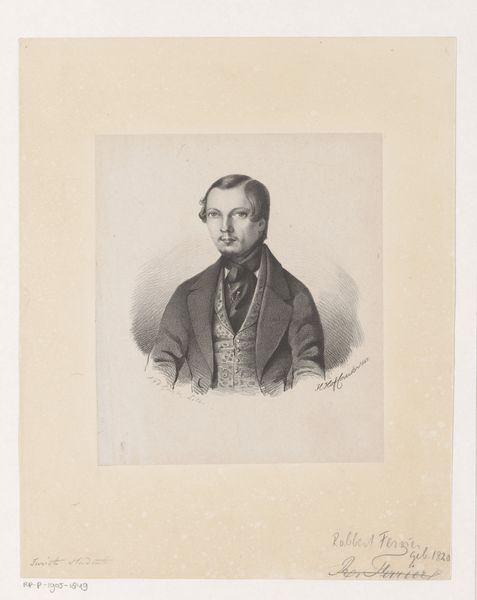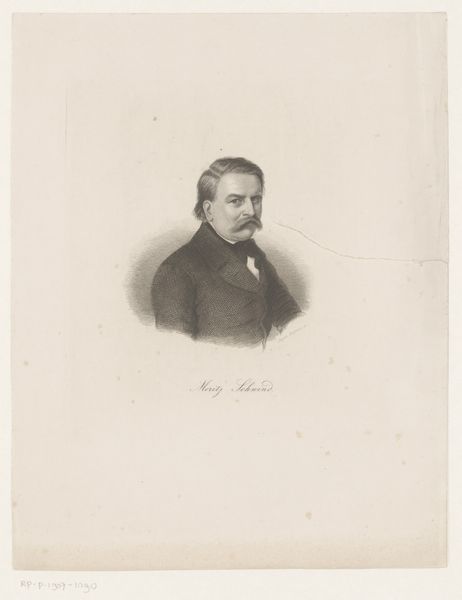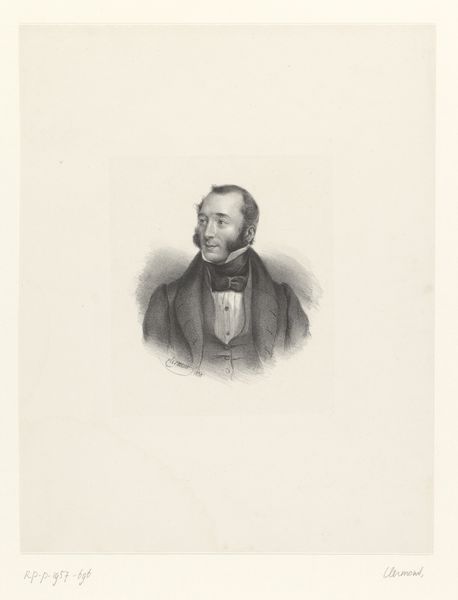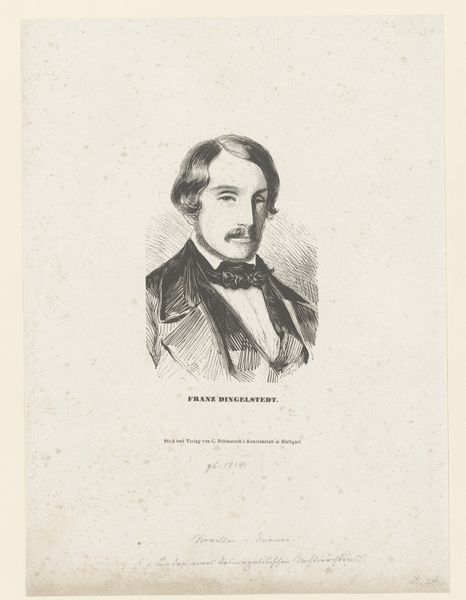
#
pencil drawn
#
photo of handprinted image
#
light pencil work
#
photo restoration
#
pencil sketch
#
light coloured
#
portrait reference
#
watercolour illustration
#
tonal art
#
remaining negative space
Dimensions: height 545 mm, width 390 mm
Copyright: Rijks Museum: Open Domain
Curator: Welcome. Today, we will explore a striking piece from 1855 by Joseph Schubert titled "Portret van mijnheer Duhem" here at the Rijksmuseum. Editor: It's remarkably austere, isn't it? That tightly controlled monochrome palette really sets a tone. Almost melancholic, despite the sitter's quite self-assured gaze. Curator: Observe how Schubert crafts this portrait primarily with pencil. The meticulous cross-hatching brings volume and depth, especially apparent in the subject's jacket and face. Note the carefully rendered textures; the lapel, the slight curl of his hair... It's all about formal structure and representation here. Editor: Precisely, but what does it represent? We see this bourgeois gentleman in 19th-century garb. Duhem, whoever he was, surely occupied a specific socio-economic space in Dutch society. I wonder about his relation to power. Who commissions such a portrait? And how does that inform its reception? Curator: One cannot disregard purely aesthetic elements! See how the oval frame directs the viewer’s eye, ensuring concentration on the sitter's face. The deliberate blankness of the background. Negative space emphasizing presence. Form dictating interpretation. Editor: But surely you recognize this emptiness mirrors the constricted roles of men in burgeoning capitalist society. Duhem is boxed in by expectations! Isn't his identity inevitably bound to external markers of status that become increasingly more important to define him? This image becomes less a depiction of the individual Duhem, but the personification of gender roles! Curator: Though your perspective has validity, framing the work as a pure reaction to its context simplifies Schubert's intent. He's more than an illustrator for social norms; he's a technical virtuoso. His mark making carries authority regardless of his political motivations! Editor: Perhaps it would be productive to analyze its modern context, too! If we consider gender roles now, and acknowledge the role images have had in their social construct. Now this pencil-based artistic achievement may function as a means to understand current issues concerning representation and inequality. Curator: Regardless, the artwork successfully represents this important gentleman of the time, utilizing both excellent pencil drawing skill and attention to form to complete his portrait. Editor: Yes, reflecting upon images like this from the past does reveal layers about history. This offers contemporary insights to what affects the status of marginalized communities in today's society.
Comments
No comments
Be the first to comment and join the conversation on the ultimate creative platform.
